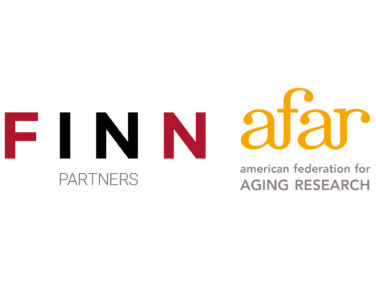Last month (May 14th to 15th), approximately 1,700 people from across the life sciences industry gathered in Philadelphia for the annual Veeva Commercial & Medical Summit. One of the prevalent themes to come out of the conference was the idea of intelligent engagement. As Veeva CEO and Co-founder Peter Gassner explained during the summit’s first-day keynote, this is a different level of customer engagement that will now be required due to several changes happening in the industry.
One of those changes is the rise of precision medicine. In 2018, the FDA approved 59 new branded products, 58% of which were for orphan drugs and 40% of which could be considered personalized medicine—the average for newly approved personalized medicines over the past five years was only 20%. This new influx of specialized treatments requires more targeted information to reach a smaller patient population and the physicians who treat them.
Another change is the increase of information being thrown at physician targets from the industry. For instance, a top target oncologist may be getting five to 15 different digital interactions from the industry every day. Pretty soon, that could all just look like noise to physicians with life sciences companies needing to find better ways to stand out.
“The first part of the opportunity is to eliminate as much noise as you possibly can,” Paul Shawah, Vice President, Commercial Cloud Strategy, Veeva, explained during the same keynote. “Now you can’t eliminate the industry noise, but you can eliminate anything within your messaging that’s not core to a specific conversation flow. And then the second opportunity is to connect the dots together and create a seamless conversation with your customer across all channels.”
To achieve that, companies need more content, better data, and improved data management of the different datasets a company is collecting.
“This is beyond orchestration,” Shawah added. “This is intelligence. It’s intelligent engagement with an intelligence layer, bringing all those pieces together, coordinating what happens in sales and marketing and across digital channels. That’s our vision.”
Veeva announced several new offerings that can help companies achieve those goals, including:
- Veeva Andi: A new AI application that discovers relevant customer insights and proactively suggests the next best action for improved field efficiency and effectiveness right in Veeva CRM.
- Veeva CRM Approved Notes: A new capability that makes it easy for field reps to capture free text notes in Veeva CRM and use the power of AI to detect potential compliance risks such as off-label messaging.
- Veeva CRM Approved Messaging: Companies can use messaging applications, including WhatsApp and WeChat, to send compliant messages to customers through any mobile device.
- Veeva Vault Auto Claims Linking: A new capability in Veeva Vault PromoMats that will help improve speed and compliance of content development by using AI to suggest links from claims to related references, reducing the administrative burden and risk of managing claims across countries, channels, and assets.
But the summit also provided the opportunity to hear from life sciences companies and other industry partners as they are working to solve issues related to data, artificial intelligence, and personalization in order to meet their own goals of improved customer engagement.
The Data Problem
According to the Veeva 2018 Customer Reference Data Survey, 86% of life sciences professionals view customer data as a strategic business asset to sales operations, but only 22% are satisfied with the data quality from their primary customer reference data provider. And although 87% of respondents have data quality initiatives underway, 54% cite one of their biggest roadblocks to be the need to cross reference multiple customer data sources.
“What we struggle with is that we have multiple different data sets,” Philippe Houben of Boehringer Ingelheim explained during a roundtable at the summit. “Traditionally, we promote face-to-face with the physicians. Then, we go beyond our internal data to also look at external data. More and more, we are also looking at patient information, and even further, collecting patient information from social media and internet sources.”
Joel VanderMeulen, Senior Director of Commercial Strategy Operations and Activities for EMD Serono’s Neurology and Immunology branches, offered one solution to help with this increase in data. His company is using data aggregators to collect and synthesize data from various sources. The data aggregator then provides EMD Serono with a comprehensive data source to be utilized for analytics and reporting. This ensures patient data remains anonymized while providing them with critical insights to enhance the patient journey. However, due to processing time, one downside is that this method may slightly delay analytics.
The goal for both Houben and VanderMeulen, however, is to build a strong data foundation, because without that you can’t actually implement many of the strategies your company may want to try.
“Most senior leaders are so focused on strategy that they forget about the foundational data requirements essential to bringing that strategy to light,” VanderMeulen explained. “We’ve recently launched a product, so the past six or seven months we were solidifying our tactical plans. Our enhanced foundational data allowed us to avoid launch pitfalls and execute our strategy and tactics. Prior, a lot of strategic ideas weren’t taking foundational data into consideration. It was assumed that the data was there, it was of a high quality, and we’d be able to implement any approach. Turns out, that was not the case.”
Achieving the Dream of AI
A strong data foundation as well as good data management are also keys to extracting insights from the information you are collecting.
“There is a lot of data out there and most of it was always just sales data, but now that’s no longer the case,” Sal Paolozza of Antares Pharma’s sales operations team/commercial operations said in another roundtable. “Without having the infrastructure to bring all that data in, and without having the technology layer to look at all the different data points and serve up what you should be doing next, it’s going to be impossible to do your job. It used to be whichever doctor writes the most prescriptions—that’s who you go see. That’s no longer the case. It’s who has the right patient demographics that your product is best suited for. It’s about adding value to your customers’ customers. Without AI, it’s going to be very difficult to continue to do that.”
In this industry, AI has come to mean different things to different people. For example, Steve Davenport, one of the leads in Biogen’s data management group, doesn’t like to think of what the industry does with AI to be Artificial Intelligence, but rather “Augmented” Intelligence. To him, actual artificial intelligence is when the machines are learning and making decisions in real time, and he doesn’t believe the industry is there yet. Instead, he offered one example of how his company is currently using AI:
“We created an algorithm where we set up years of historical data around our field call plan to identify how many of the doctors that we identified on the call plan actually wrote a prescription the following quarter. So we trained the model over several periods, showing it what we thought was going to happen, and then what the actual results were. So, it’s not quite that real-time approach, and it’s more backwards historical processing but it was successful. Last quarter, we launched the new model, and we achieved a very high correlation between prescriptions written by HCPs and those doctors on our call plan. Therefore, we are getting very close to identifying, and predicting who is likely to write a prescription through this model.”
But even if the industry isn’t quite adopting true artificial intelligence and machine learning techniques, it is still important to implement some level of AI or risk falling behind.
“I believe AI has become a mandatory technology,” said Animesh Gandhi, Senior Director, Analyst at research and advisory company Gartner. “Predominantly because the healthcare industry as a whole, not just life science companies, is seeking a transformative approach to engaging their customers, which includes patients, in a personalized way. That means providing the right information at the time, with the right content, and through the right channel to address their needs. Patients are frustrated and seeking personalized assistance with their diagnosis and treatment plans. We have more patients than medical professionals, so to enable personalization at scale, AI is the only viable option available”
The Importance of Personalization
Even as the importance of AI grows for life sciences companies, it will never take away from the key role of the sales force and medical science liaisons (MSLs)—in fact, they may become even more important.
“We can increasingly capture information and knowledge gained from that face to face engagement and use it to help inform the customer experience,” explained the director of a global CRM strategy team at a top 20 pharmaceutical company. “I believe we will mine more and more data from the sales representative or account manager from the face to face engagement and pull that into other digital channels to provide an overall better experience.”
And improving the customer experience is more important than ever as companies need to offer more personalized experiences as they target smaller patient populations and the physicians who serve them.
“As we move into a specialty space as with precision medicines, I think it’s incumbent upon marketing to understand the individual customer journeys, and even patient journeys,” continued the CRM director. “If you’re dealing with only 13 hospitals across the country, and you’re only dealing with, in some cases, 30 patients, you better have a number of different patient journeys because those are going to be very different.”
Glen Morris, Global Lead for Field Medical Business Solutions from Bristol-Myers Squibb, added that on the medical side, “What is changing with precision medicine is the need for richer and new deeper content that MSLs can deliver to a broader range of physicians. It’s really about getting the MSL in contact with physicians as needed and with the tools to have a deeper conversation. So intelligent routing is going to be absolutely key in enabling this different, broader conversation.”
While all of these changes and the need for digital transformation may seem daunting, the life sciences industry may not be as far behind other industries as others may think.
“I’d say the life sciences industry is actually on par with a lot of other industries, at least on the commercial side of the industry,” Eric Newmark, an analyst from market research company IDC, said during one of the roundtables. “Some other industries may seem further along in digital transformation, but that doesn’t mean they’re doing it right. If you peel the onion back and look at the projects and the initiatives going on in different industries, many of them are still very tactical. They’re often not integrated well across the enterprise. And, I think, one of the reasons the life sciences industry seems to be moving a little slower with their digital transformation is because they’re trying to do it right. They’re trying to do it at a higher, strategic level where you can make connections across sales and marketing and the supply chain, and even over into clinical. This is crucial because it’s how companies will get the real value of digital.”









